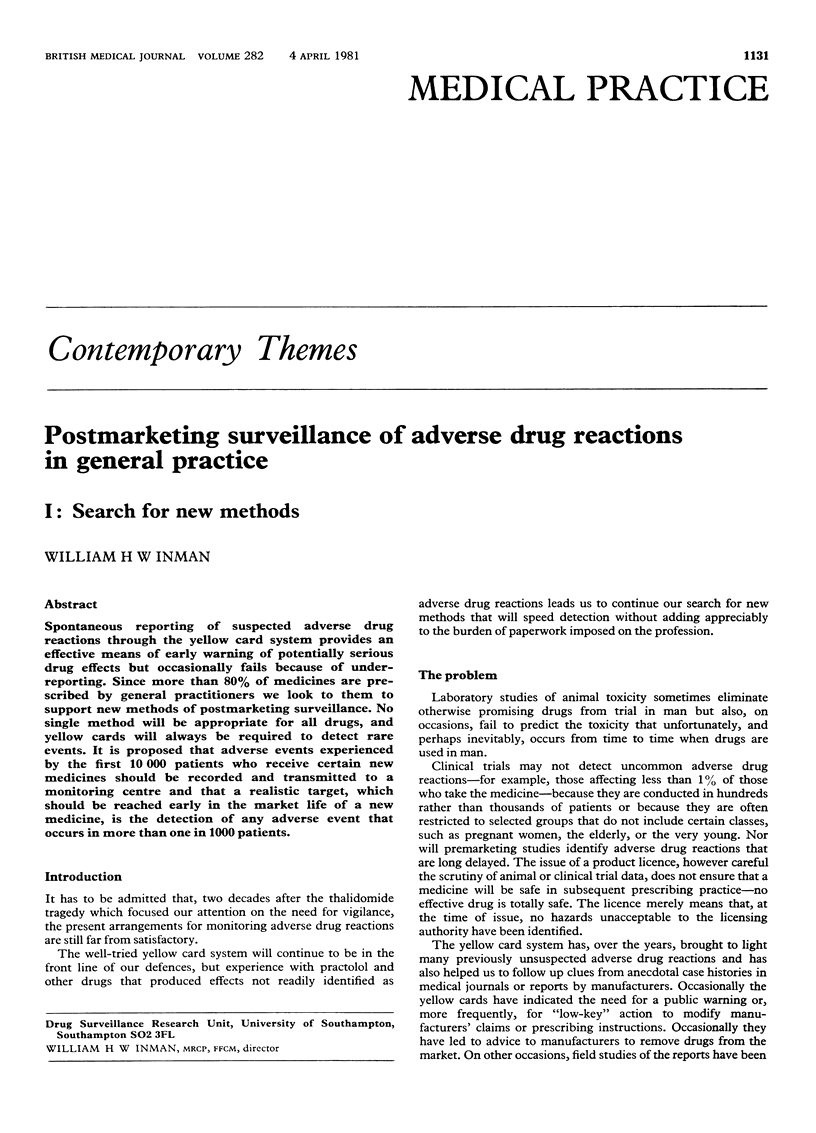Abstract
Spontaneous reporting of suspected adverse drug reactions through the yellow card system provides an effective means of early warning of potentially serious drug effects but occasionally fails because of under-reporting. Since more than 80% of medicines are prescribed by general practitioners we look to them to support new methods of postmarketing surveillance. No single method will be appropriate for all drugs, and yellow cards will always be required to detect rare events. It is proposed that adverse events experienced by the first 10 000 patients who receive certain new medicines should be recorded and transmitted to a monitoring centre and that a realistic target, which should be reached early in the market life of a new medicine, is the detection of any adverse event that occurs in more than in 1000 patients.
Full text
PDF

Selected References
These references are in PubMed. This may not be the complete list of references from this article.
- Dollery C. T., Rawlins M. D. Monitoring adverse reactions to drugs. Br Med J. 1977 Jan 8;1(6053):96–97. doi: 10.1136/bmj.1.6053.96. [DOI] [PMC free article] [PubMed] [Google Scholar]


